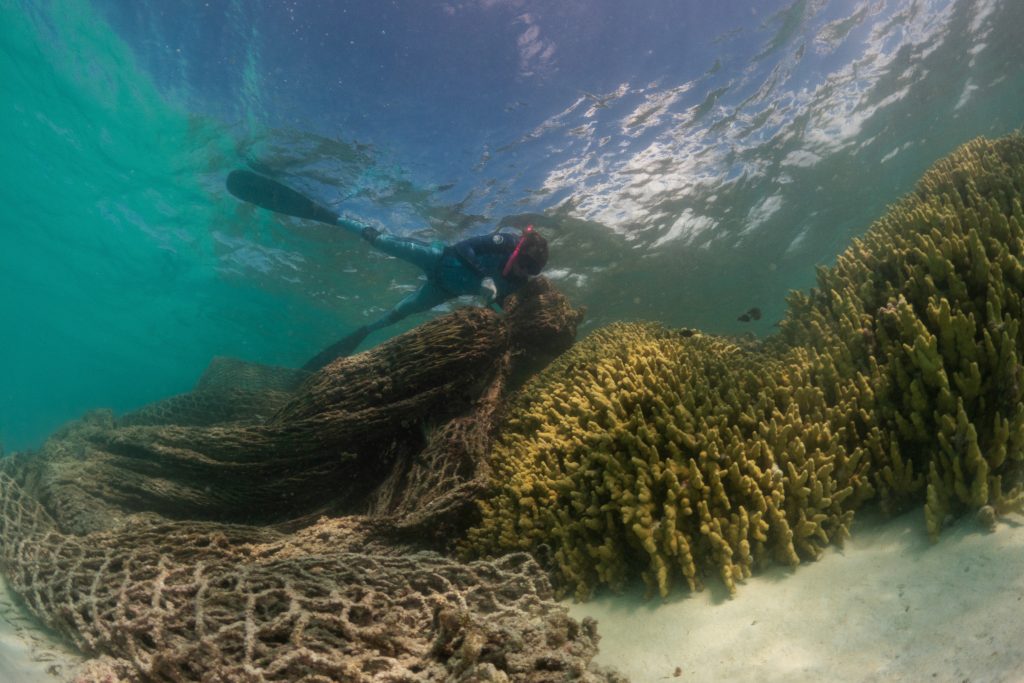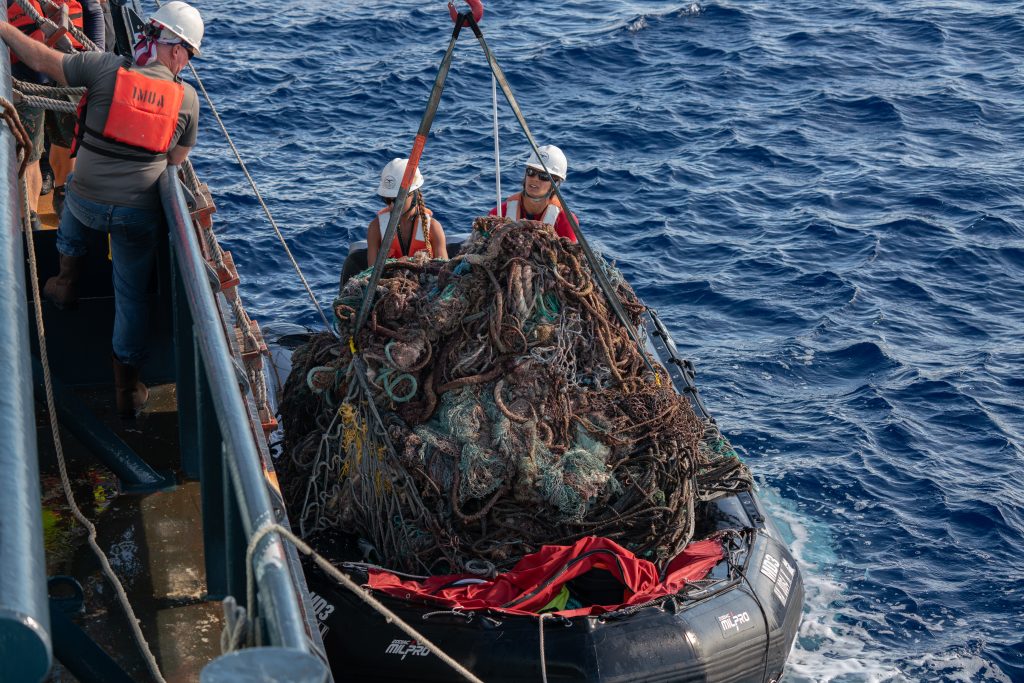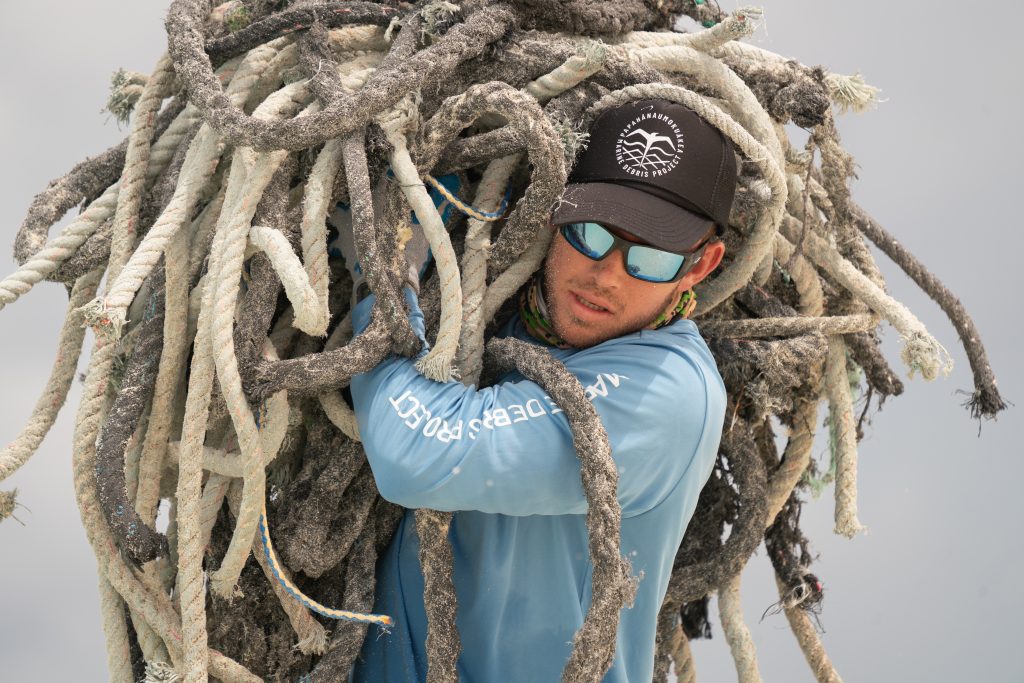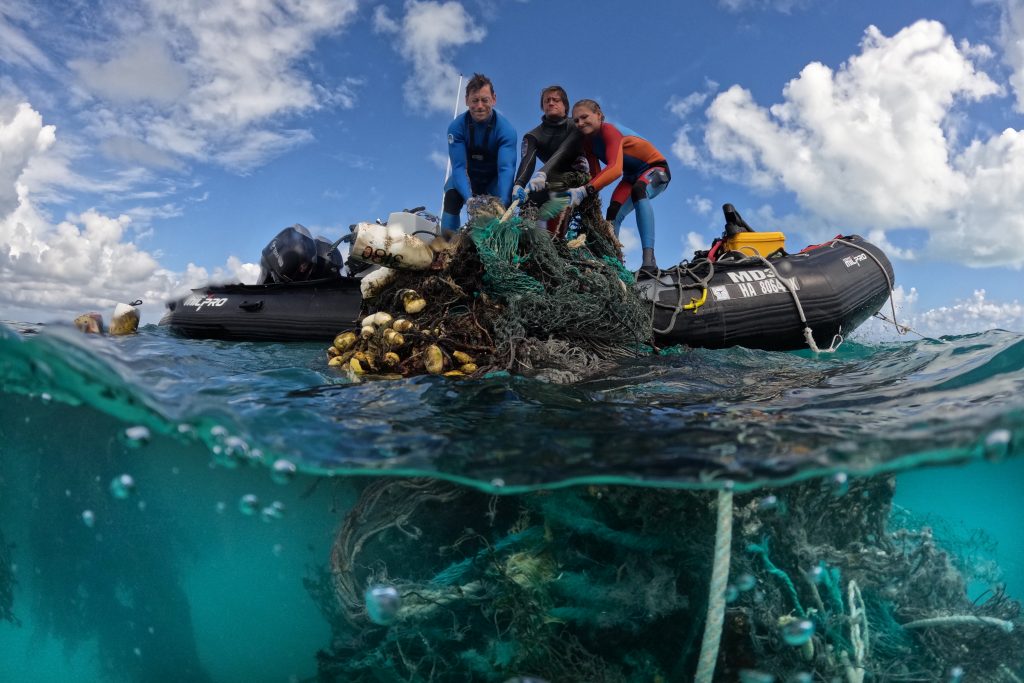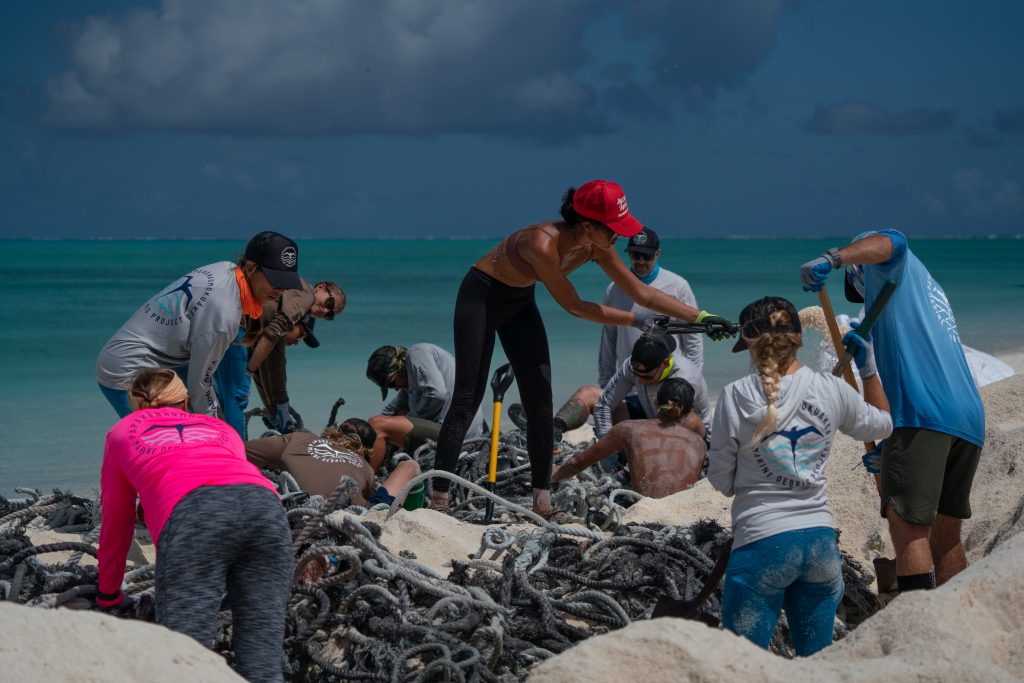Team removes 63 tons of marine debris from Papahānaumokuākea Marine National Monument
A team of freedivers from the Honolulu-based nonprofit organization Papahānaumokuākea Marine Debris Project returned on Saturday from a 28 day cleanup expedition to the remote Papahānaumokuākea Marine National Monument in the Northwestern Hawaiian Islands.
The team successfully removed a total of 126,310 pounds or 63 tons of marine debris over the course of a 4-week effort. This expedition was PMDP’s second large-scale effort of 2023, with a previous expedition completed during the month of July. The total amount of debris collected by PMDP in the last 90 days now stands at 212,410 pounds or 106 tons.
PMDP conducts multiple annual cleanup expeditions to the remote Hawaiian islands, reefs and atolls of Papahānaumokuākea to reduce the risk of entanglement for many species of protected wildlife, to mitigate coral reef damage, and minimize risk of plastic ingestion for seabirds.
On this latest expedition, cleanups were conducted at Lalo (French Frigate Shoals), Kamokuokamohoaliʻi (Maro Reef), Hōlanikū (Kure Atoll), and Manawai (Pearl and Hermes Atoll).
Despite visiting four locations within Papahānaumokuākea, the team’s primary focus on this mission was the cleanup of Manawai (Pearl and Hermes Atoll), which lies nearly 1,200 miles from Honolulu.
This 19 mile long coral atoll encircles a 90,000 acre lagoon of calm waters, containing extensive coral gardens growing to within 1 ft of the surface. This maze of coral reefs creates a sheltered habitat for a diverse array of marine species, but also traps a large amount of floating derelict fishing gear (ghost nets). Due to its huge size, at least half of Manawai’s surveyable lagoon area had not been cleaned in over 10-15 years, which made this a top priority for PMDP.

Within seven days at Manawai, the team successfully removed 71,760 pounds of derelict fishing nets from the reefs, an average of over 10,000 pounds per day. Each pound of net has to be located by divers, carefully cut from the reef and then loaded into the boats by hand. In that same week, the team encountered seven live green sea turtles that had become entangled in ghost nets, including three adults trapped in the same net. Fortunately, the team was able to free all seven turtles.

“If we’re seeing this level of animal entanglement and mortality during just a couple of days here, you can imagine how many more of these situations go unseen during the rest of the year” said PMDP president Kevin O’Brien. “We have an unseen problem on our hands. Out of sight, out of mind.”
In addition to the other removals, the PMDP team also conducted three light-duty salvage operations: a derelict boat hull (21ft), as well as two derelict buoys that were causing coral reef damage were removed from the reefs of Manawai. “These larger, heavier items that wash in from elsewhere in the Pacific can have a significant impact too. They bash their way through delicate coral reefs as they drift in from the open ocean, and can continue to destroy corals long-term when storms or high tides remobilize them and keep them moving around” said O’Brien.
Of the 126,310 pounds total:
- 102,310 pounds were ghost nets removed from the reefs
- 18,145 pounds were ghost nets removed from the shorelines
- 1,030 pounds were shoreline plastics
- 4,825 pounds were larger derelict items (boat, buoys)
As PMDP scales up their program, PMDP’s goal is to “catch up and keep up” with marine debris accumulation in Papahānaumokuākea Marine National Monument by 2027: “Catch up” with the backlog of accumulated debris from 15 years of reduced cleanup effort, and “keep up” with the new annual accumulation of ghost nets on the reefs of PMNM (115,000 pounds annually).
“Marine debris, including derelict fishing gear, impacts the natural and cultural heritage of Papahānaumokuākea Marine National Monument,” said Nicole R. LeBoeuf, Assistant Administrator of NOAA’s National Ocean Service. “With funding from the Bipartisan Infrastructure Law, we are proud to support this project that builds on NOAA’s more than 20-year legacy of marine debris removal in the monument and helps protect and preserve this unique environment for years to come.”

Thanks to the “Nets to Energy” partnership with Schnitzer Steel Corporation and Covanta Energy, a majority of the debris collected will be incinerated to generate electricity for powering hundreds of Oʻahu homes.
This mission was supported by:
- The National Fish and Wildlife Foundation with support from:
- Marc and Lynne Benioff
- National Oceanic and Atmospheric Administration Marine Debris Program. NOAA support includes funding from the Bipartisan Infrastructure Law.
- McPike-Zima Foundation, the Bruce G. Geary Foundation, and the Hawaiʻi Community Foundation
- Numerous community donors.
- In-kind support provided by NOAA Office of National Marine Sanctuaries.





